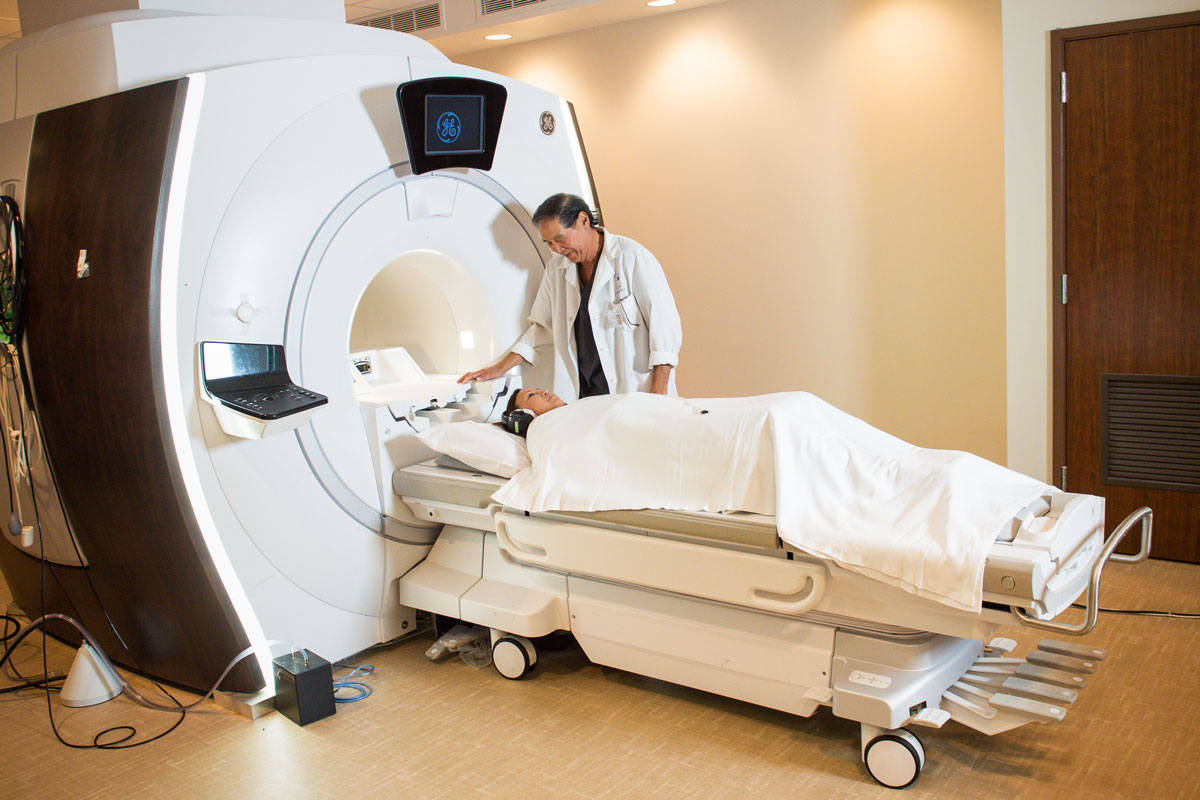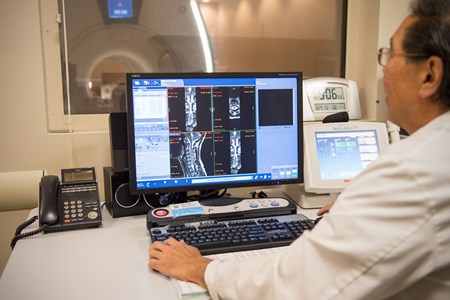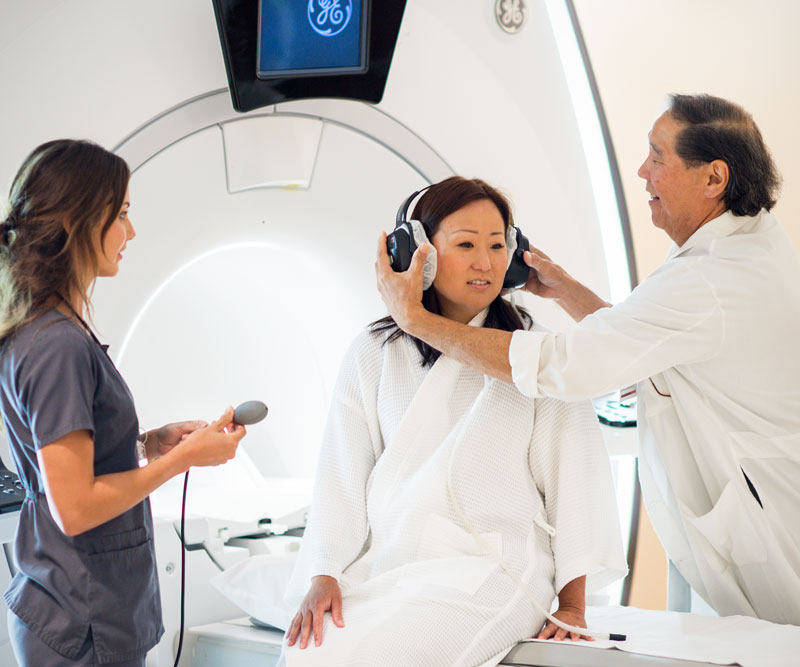
Have you ever gone in to your primary care physician (PCP) with a concern over a sore rib or pounding headache and been told you need to schedule an appointment to receive an MRI?
Your first reaction most likely was – an MR-what?!
MRI stands for magnetic resonance imaging. A physician will request an MRI to gain detailed images of organs and structures within the body in order to help diagnose a health problem.
How?
By using a large magnet, an MRI machine creates a strong magnetic field around the patient. This magnetic field, along with radio waves, alter the natural alignment of hydrogen atoms in the body. The magnetic field lines up the hydrogen protons, and the radio waves knock the protons out of position. As the protons realign back into proper position, they send out radio signals. A computer uses these signals to form two-dimensional (2D) images of the body structure or organ.

Cross-sectional views of the image also can be done with MRI to show more details.
An MRI may be used to examine the brain, spine, heart, bones, joints and soft tissues such as cartilage, muscles and tendons for things like:
- Injuries, such as bone fractures or cartilage tears.
- Abscesses (collections of pus).
- Infection.
- Tumors.
- Congenital defects (those you’re born with).
- Degenerative diseases or health issues, like arthritis or multiple sclerosis.
- Inflammatory disease.
- Hydrocephalus (fluid in the brain).
- Aneurysms (weakening and ballooning of an artery).
- Osteonecrosis (bone cell death caused by a poor blood supply to the area).
- Herniation or degeneration of discs of the spinal cord.
- Bleeding into the brain or spinal cord.
- Bone marrow disease.
- Atherosclerosis.
- Cardiomyopathy.
- Heart failure.
- Aneurysm.
- Heart valve disease.
An MRI also can be used to help plan surgeries on the spine and to look for problems after surgery, such as scarring or infection.
There may be other reasons for your PCP to recommend an MRI.
Talk to your PCP if you have any questions or concerns about what to expect leading up to and during your MRI procedure, or click here.
Published on: July 8, 2016




